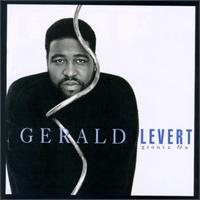Groove On Gerald Levert . It was released by EastWest Records on September 6, 1994, in the United States. The follow-up to Levert's debut album, Private Line Top R&B/Hip-Hop Albums and number 18 on the US Billboard 200country music group Boy Howdy .[ 1] Jada Pinkett .[ 2]
Title Writer(s) Producer(s) 1. "Groove On" 4:08 2. "Rock Me (All Night Long)" Levert Edwin "Tony" Nicholas 5:16 3. "Let the Juices Flow" 4:59 4. "I'd Give Anything " David Foster 4:11 5. "Answering Service" 5:29 6. "It's Your Turn" Greg Charley Charley 4:31 7. "How Many Times" 6:26 8. "Can't Help Myself" 5:23 9. "Have Mercy" 5:21 10. "Same Place, Same Time" 4:56 11. "Nice & Wet" 4:46
Bonus track Title Writer(s) Producer(s) 12. "Love Street" 6:16
Gerald Levert – vocals, backing vocals (1-3, 5, 7-12), arrangements (1-3, 5, 7-12), vocal arrangements (1-3, 5, 7-12)
Marc Gordon – keyboards (1), keyboard programming (1), sequencing (1), drums (1), backing vocals (1), arrangements (1)Edwin "Tony" Nicholas – keyboards (2, 3, 5, 7-9, 11, 12), keyboard programming (2, 3, 5, 7-9, 11, 12), sequencing (2, 3, 5, 7-9, 11, 12), drums (2, 3, 5, 7-9, 11, 12), arrangements (2, 3, 5, 7-9, 11, 12)
Claude Gaudette – synthesizer programming (4)
Tony Smith – synthesizer programming (4)
Simon Franglen – Synclavier programming (4)
Michael Goods – additional keyboards (5, 7, 8), drum programming (5, 7, 8)
Troy Patterson – additional keyboards (5, 7, 8), drum programming (5, 7, 8)
Greg Charley – all instruments (6)
Michael Thompson – guitars (4)Randy Bowland – guitars (10)
Dwain Mitchell – drum programming (10), arrangements (10)
David Foster – arrangements (4), string arrangements (4)William Ross – string arrangements (4)Warren Wiebe – backing vocals (4)Richard Chatman – backing vocals (5, 10)
Christopher Kelly – backing vocals (5, 10)
Gerard LaBeaud – backing vocals (5, 10)
James LaBeaud – backing vocals (5, 10)
John Winston – backing vocals (6) Horns and Strings (Tracks 5, 7, 9 & 12)
Dennis Williams – conductor
Glenn Estrin and Richard Swartz – French horn
Jack Faith – flute (12)
Larry Gold and Mark Ward – cello
Walter Pfeil – harp
Davis Barnett and Ruth Wright – viola
Larry Abramovitz, Bonnie Ayers, Patricia Brown, Olga Konkpelsky, Helen Kwalwasser, Emma Kummrow, Charles Parker Jr., Jean Perrault, Christine Reeves, Barbara Sonies and Greg Temperman – violin Elizabeth Barrett – art direction, design
Ruven Afanador – photography
Trevel Production Company, Inc. – management, direction Technical
Ted Jensen – mastering at Sterling Sound (New York, NY)Craig Carruth – recording (1)
Jim Salamone – recording (1)
Andy Kravitz – mixing (1)Ron Shaffer – recording (2, 3, 10), mixing (3)
Mike Tarsia – recording (2, 5, 7-12), mixing (2, 5, 7, 9, 11, 12)
David Reitzas – recording (4)
Mick Guzauski – mixing (4)Arthur Stoppe – recording (5, 7, 9, 12)
Pete Tokar – recording (5, 7-9, 11)
Troy Patterson – mixing (5, 7, 8)
Dwayne Jones – recording (6), assistant mix engineer (6)
Gerard Smerek – mix engineer (6)
Greg Charley – mixing (6)
John Winston – mixing (6)
Mark Demartini – recording (10)
Dirk Grobelby – mix assistant (1)
Gordon Rice – recording assistant (2, 3, 5, 7, 9-12), recording (8), mix assistant (8, 9, 11, 12)
Paul Smith – recording assistant (2, 3, 10, 12), mix assistant (2, 3, 7, 12)
Brandon Harris – assistant engineer (4)
Felipe Elgueta – additional engineer (4)
Matt Steward – recording assistant (6)
Paul Hammond – recording assistant (10) 